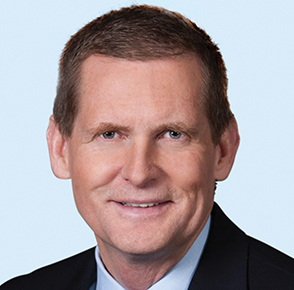IHS Markit’s $5bn issuance finances Ipreo acquisition
Financial analyst IHS Markit chose a quiet time to issue the bond that will bankroll its expansion strategy. David Wigan reports.
Financial information and analytics provider IHS Markit’s purchase of software company Ipreo, completed in August, marked a significant strategic step for the company, helping it continue the growth of its core business and expand in a new segment. At $1.885bn, the transaction came at a considerable cost, but the financing around the deal showed IHS Markit is more than adept when it comes to operating in the sectors it serves.
The Ipreo deal followed a long period of relationship building during which IHS Markit tracked Ipreo and bonded with the management team. IHS Markit recognised that Ipreo’s solutions to support market participants, and in particular private markets, in the capital-raising process was an excellent match for its own business.
“There was both a growth opportunity and synergy with our valuations business,” says IHS Markit executive vice-president and chief financial officer Todd Hyatt. “We knew the team well and the strategic case was compelling, so we were very excited to be able to make it happen.”
Debt ratio rise
IHS Markit’s capital policy is to operate at two to three times leverage as a proportion of adjusted earnings before interest, tax, depreciation and amortisation, but with an option to lever up a turn for a strategic acquisition. The Ipreo purchase pushed IHS Markit’s debt ratio from 2.7% to 3.8%, and the company is keen to ensure it drops back below 3% over the coming year. At the same time, it is engaged in a medium-term plan to reorient its debt structure away from bank finance and towards capital markets.
“We want to bring our leverage levels down as quickly as possible and part of that will come from the sale of MarkitSERV [IHS Markit’s derivatives processing business], which we are disposing of as part of the Ipreo deal,” says Mr Hyatt. “Also, we are recalibrating our balance of public and bank debt; we came into the year targeting a two-thirds fixed debt structure, compared with about 50% at that time.”
IHS Markit’s move toward more fixed rate debt is well timed, with benchmark rates rising in the US, lifting the cost of shorter term bank debt. Another driver of its strategy has been its positive rating momentum, with credit rating agency S&P upgrading it to BBB- on March 29, 2018. Alongside Fitch’s BBB, this meant IHS Markit’s bonds became investment grade index-eligible for the first time.
IHS Markit financed the Ipreo acquisition (from private equity funds managed by Blackstone and Goldman Sachs’ merchant banking division) through a combination of a revolving one-year credit facility and bond issuance. In line with its aim to extend the average maturity of its debt, the company went with a combination of five- and 10-year securities, aiming for benchmark size in each.
“Because it was our inaugural investment-grade transaction, we wanted to do something that would launch into a good market and would lay the foundations for further issuance in due course,” says Mr Hyatt. “Our aim was to launch around the time of the completion of the acquisition and so we were speaking with our banks in July to see whether we might be able to get out before the August break.”
Timing is key
HSBC, JPMorgan and Bank of America Merrill Lynch were chosen as bookrunners on the transaction, with support from RBC and Wells Fargo. As markets improved in the second week of July, the company made the decision to launch with a non-deal roadshow. The banks set up question-and-answer sessions and IHS Markit executives eventually spoke with about 100 investors.
“We got very positive feedback and made a decision to launch on July 19,” says Mr Hyatt. “We set initial price talk at 170 basis points over Treasuries on the five-year and 220 over on the 10-year. The timing was great – I think we were the only non-financial issuer in the market on the day of the launch.”
Books opened at 9.15am and two hours later bankers had received more than $6bn of interest, leading to a decision to tighten talk to 145 basis points and 195 basis points. However, the company’s primary aim at that stage was not to squeeze every last cent out of the transaction. Rather it was looking to engage positively with the investment-grade investor community.
“We ended up pricing slightly below par on coupons of 4.125% and 4.75%, with final orders coming in at about $5bn,” says Mr Hyatt. “Our intention is to be back in the market as we execute our plan to move toward more fixed-rate financing, and it makes sense for us to build strong relationships that may continue to support us as we grow.”



